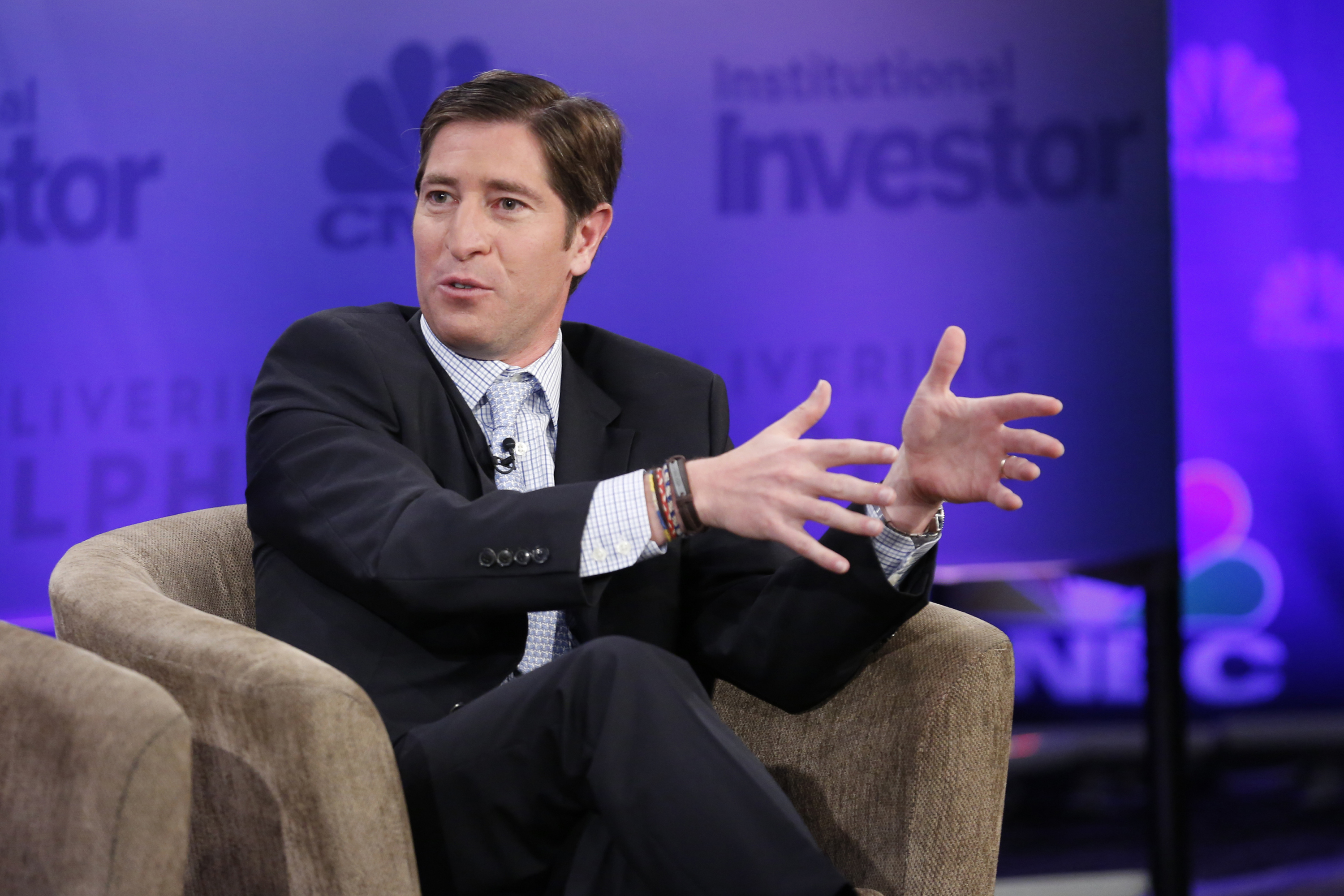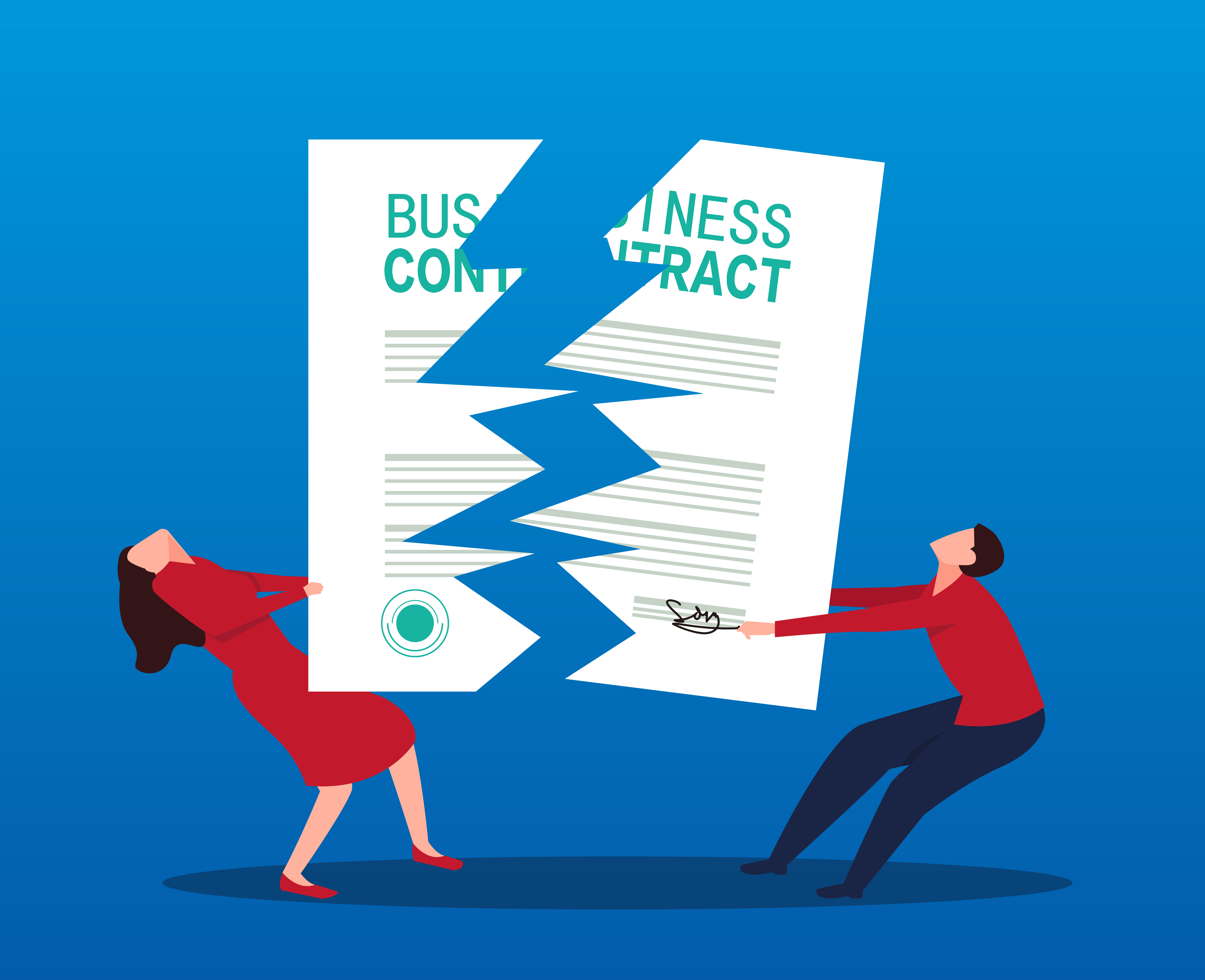Extra Crunch offers members the opportunity to tune into conference calls led and moderated by the TechCrunch writers you read every day. This week, TechCrunch’s Connie Loizos sat down with Scott Kupor, managing director at venture capital firm Andreessen Horowitz to dig into his new book Secrets of Sand Hill Road, discuss his advice for new founders dealing with VCs and to pick his brain on the opportunities that excite him most today.
Scott gained inspiration for Secrets of Sand Hill Road after realizing he was hearing the same questions from different entrepreneurs over his decade in venture. The book acts as an updated guide on what VCs actually do, how they think and how founders should engage with them.
Scott offers Connie his take on why, despite the influx of available information on the venture world, founders still view VC as a black box. Connie and Scott go on to shed some light on the venture thought process, discussing how VCs evaluate new founders, new market opportunities, future round potential and how they think about investments that aren’t playing out as expected.
“[Deciding on the right amount of money to raise] is one of the areas where I think people will rely on convention too much, rather than figuring out what makes sense for them. And what I mean by convention is, they say, “Hey, my friends down the street just raised a $7 million A round, so $7 million must be the right size for an A round.”
The way we try to help entrepreneurs think about it is think about the pitch that you’re going to give at the next round of financing. Let’s say you’re raising a Series A, imagine sitting here 18 or 24 months from now doing the Series B financing, what’s the story you’re going to want to be able to tell the investor then, as to what you accomplished over that last 18 to 24 months?
And then, almost work your way backwards to say, “If that’s the story that I want to tell, and we all agree that’s a compelling story where somebody will come in hopefully, and fund it at a valuation that’s higher to reflect the progress of the business, then let’s work our way back, and say “how do we de risk that?””

Image via Getty Images / Heidi Gutman/CNBC/NBCU Photo Bank
Connie and Scott also dive deeper into Andreessen Horowitz’ investing and post-investing structure, and what the future of the firm and its key investments may look like down the road.
For access to the full transcription and the call audio, and for the opportunity to participate in future conference calls, become a member of Extra Crunch. Learn more and try it for free.
Connie Loizos: Hi, everyone. It’s time to kick off today’s call with Scott Kupor, a managing partner at the venture firm, Andreessen Horowitz, and more recently, the author of the book, Secrets of Sand Hill Road: Venture Capital and How to Get It. Thank you so much for making time for us today.
Scott, I’m still in the process of reading the book, but I have to say, much like your colleague, Ben Horowitz’s book, and this is really true, I’m really enjoying it.
Scott Kupor: Well, thank you.
Connie: It doesn’t really feel remotely like work, which I find to be true with the vast majority of business books.
Scott: Well, I appreciate that. I had great help from Ben [Horowitz] in terms of inspiration from his book. So I’m glad to hear that. Thank you very much.
Connie: Well, I think the storytelling in it is great. But let’s start with the premise of the book. You talk about information asymmetry, but there’s actually quite a lot of information out there for founders thanks in part to Y Combinator, which you acknowledged in the book as having cracked open the black box of venture capital. Why do you think venture capital remains a mystery to founders and potential founders?
Scott: Yeah, it’s interesting. I think there are two challenges. One, I agree with you that, look, if you live in the Bay Area, or New York, or Boston, there seems to be a lot of resources out there.
Although I was surprised that I still kept getting a lot of the same questions from entrepreneurs over the years, and that’s really what inspired me to say, “Hey, maybe there’s more appetite than there is actually available information for this stuff.” But then, I think we’ve got a more general problem, which is, if you look outside those three geographies, and obviously, there are efforts in other places in the US, but we still have not done a great job of geographically distributing the opportunity for venture capital and entrepreneurship in the US.
And, we know that we’re starting to see some big uptake internationally, in other countries, but it’s still also fairly concentrated in China and some other places like that. I really was hoping that, if I could lay it out for people, it might demystify it in a way that actually might encourage more entrepreneurship, and in particular, in areas where we haven’t seen it happen so far.
Connie: Absolutely. And I also think as prominent as Y Combinator is in our mind, there are still a lot of people in this country who haven’t even heard of YC quite yet.
Scott: Exactly.

Image via Getty Images / retrorocket
Connie: Talking about demystifying venture capital, you’ve been with Andreessen Horowitz for roughly 10 years, pretty much from the outset of the firm. Can you tell us, beyond a warm introduction, what does it take to get a meeting at Andreessen Horowitz? What do you start looking for on paper?
Scott: What we’re really looking for is a couple of things. First, we always think about market initially, because we know that we’re going to be wrong a lot of times and the way we have to invest is we have to believe at the time we make the investment that the market size is big enough to be able to support a standalone, hopefully, public company at some point in time.
So, that’s always the threshold question we’re trying to ask — is the opportunity that they’re going after is as big as it possibly can be? And then, most of the analysis, particularly the early stage, tends to be based on team, because, we don’t really have the benefit of the product yet.
We definitely don’t even know, quite frankly, how the markets going to evolve. And so, the real question is what is it about this team or set of individuals that makes them uniquely qualified to go after this opportunity? What do they know?
We use this term internally, called an “earned secret”, which is what have you learned that other people might not know that’s going to really enable you to go build something that we know is going to be tough and competitive, and a long slog? And, a lot of the evaluation really starts there.
Connie: VCs like to see people whose entire life arc leads to this moment and this revelation. You also talk in the book about Marc [Andreessen] and Ben [Horowitz] earlier in the firm, describing this quality in founders that they wanted to fund as “egomaniacal”, meaning an individual has to be so confident that they almost seem to be partly delusional about it — or maybe they genuinely are, which I thought was interesting, and also something that I hear often times. Can you maybe elaborate on that a little bit?
Scott: Yeah, you’re right. It’s very funny. When we raised the first fund, we literally had the word egomaniacal in a list of characteristics of entrepreneurs that we’re looking for. And I can tell you, in the institutional limited partner community, we got a lot of raised eyebrows about whether that was actually a good thing or not. And, we decided we needed to soften the language.
The intent behind it was not “egomaniacs”, but the intent behind it was exactly what you described, which is we know the process of starting a startup is going to be incredibly difficult, the likelihood of success obviously, is relatively low, and you have to — as my 11th grade English teacher, used to say — “You have to willfully suspend disbelief to a certain extent.”
Everyone’s telling you your idea’s terrible, or this will never work, and so you do have to be of a certain mind to say, “Hey, I’m going to go quit some job that I have that might be sustaining my lifestyle, to go build something that everyone in the world is telling me is a crazy idea that probably is not likely to work.”
And, that’s really what we meant by egomaniacal, even though we probably didn’t choose our words very carefully.
Connie: But, I do think it’s very appropriate even though it obviously has pejorative connotations. For example, I remember Dave Goldberg of Survey Monkey saying at some point, “Storytelling — salesmanship — is the most underrated aspect of entrepreneurship.”
And I was recently sitting down with Sam Altman of OpenAI, and we were talking about his company, which is focused on this technology that doesn’t really quite even exist yet. And Sam paints this picture that, if anyone else were to talk about the company’s promises, he would be a laughingstock. And I say that with admiration. He has this gift for painting a picture, and you see in him what VCs are looking for.

Image via Getty Images / sorbetto
Connie: In the book, you also note that products are never static, that VCs assume that a product being pitched to them is rarely the product that will ultimately prevail. So, what are you looking to see exactly, beyond the founders?
Scott: We use this term of the idea maze internally. And what we really want to see is… It’s like, remember in school when you had to show your work, basically. That’s the way we think about it.
We’re less interested in the answer, we’re more interested in the path, as circuitous as it may be, that you came to when you actually figured out the product. And the reason we care about that is because, exactly what you said, which is, we know the product is likely to change as soon as you introduce it to the market, because you can’t possibly be clairvoyant and know exactly what everybody’s going to want, until you actually put something in their hand, particularly, for products that don’t have any existing comparable today.
So, you can imagine if you were the early Lyft team, you couldn’t really have anticipated what would happen if we actually gave people the opportunity to call a car on their cell phone until you actually did it. And, we really want to understand what’s the intellectual maze you’re doing, so that we know when you get that feedback, how well are you likely to incorporate it into the product? When will you know if you actually need to do an actual pivot, which is, from having covered this industry is a very polite way of saying, you have to start all over again?
Connie: Sure.
Scott: But that’s really what we’re looking for is more of the thought process, and while you’re making certain decisions, you’re making based on the information you have, more so than just per se, what is the actual product plan today?
Connie: And do you want to see founders walk you through different possible evolutions of a product? Is that something that you talk about from the outset or no, you just say, “This is your path to this product at this point. I can see that you’re a flexible thinker. We’re going to start here, and then we’ll see where it goes.”?
Scott: Yeah, I think that’s right. I think the latter is fine. We would like to see a product plan in the sense of, “Look, if my assumptions are right about the market, this is the set of features that I believe we need today, and when you give me your money, Mr. or Mrs. venture capitalist, here are the things I’m going to accomplish with that money that will evolve along that product plan.”
But, we don’t necessarily need to say, “Hey, here’s product plan A, and product plan B, and product plan C.” But, it’s that process of walking through how you got to product A as you think being the right product, that helps us crystallize our thinking about your ability to incorporate information, and be responsive to the needs of the market.
Connie: I also wonder in terms of responsiveness, how collaborative these early meetings are when you’re deciding on a founder. If they talk to you about their idea and you like it, but you have different ideas about it… Is it better if they’re receptive to your ideas, or is it better if they make an argument against them, just case by case? How do you think about that?
Scott: It’s funny. As much as we all like to hear ourselves talk sometimes, the reality is, it makes us nervous in a meeting if after sitting with you for 30 minutes, and this is your life’s work, you talked about the organic process of starting a company, if I can talk you out of it or tell you what’s wrong with your product in 30 minutes.
It makes me question your real stick to it-ness and the research you’ve done to date. Look, I think the right advice for the entrepreneurs — you should be responsive to feedback that a venture capitalist may give you, but the reality is probably, if a venture capitalist is giving you product feedback, that’s probably a good sign that you’re not talking the same language as they are, and you probably need to find a partner who better recognizes what the opportunity is you’re going after.

Image via Getty Images / z_wei
Connie: Great. And then, of course, a big question for founders is the right amount of money to take. How do you, even as a firm, decide on the right amount of money to provide to a founder, especially when you’re talking about a market that, in your words, doesn’t yet exist?
Scott: This is one of the areas where I think people will rely on convention too much, rather than figuring out what makes sense for them. And what I mean by convention is, they say, “Hey, my friends down the street just raised a $7 million A round, so $7 million must be the right size for an A round.”
And, the way we try to help entrepreneurs think about it is, the way to think about the amount of money is, think about the pitch that you’re going to give at the next round of financing. Let’s say you’re raising a series A, imagine sitting here 18 or 24 months from now doing the series B financing, what’s the story you’re going to want to be able to tell the investor then, as to what you accomplished over that last 18 to 24 months?
And then, almost work your way backwards to say, “If that’s the story that I want to tell, and we all agree that’s a compelling story where somebody will come in hopefully, and fund it at a valuation that’s higher to reflect the progress of the business, then let’s work our way back, and say “how do we de-risk that?”
So, maybe we need $5 million to de-risk that. Or maybe the answer is we do need $7 million to de-risk that. But think about it as almost a backward walk from the next round of financing, and making sure that you thought it through that way. And, if you decide you want to take more money, then you just got to be mindful of the fact that maybe that means those objectives you set for that series B financing need to be updated and increased, because the expectations of that next investor may just be commensurately higher.
Connie: Right. And, I also wonder what the expectation was after that first check. I wonder, is that also a process of walking things back? You look out, and you need, say, again, $7 million to get to that series B. You’re planning out these milestones. I’m just wondering how metrics-driven is the firm? And, what do you have to see progress on a certain pace?
Scott: Yeah. The honest answer is, it’s really hard to generalize it, because it’ll be very specific to the stage of company you’re at, and the type of business. Let me give an example.
If you’re an enterprise company, if you’re selling software to the enterprise, there are no great rules around this, but hey, if I’m a series A company, and then I’m going to raise a series B 18 to 24 months later, that series B investor’s going to want to see some real proof that that product actually is being taken up by the market. And, that doesn’t mean $20 million, but it probably means more than $3 to $5 million, or something like that.
So, it will vary a little bit by type of company. But, the thing I think to keep in mind is, if I’m a VC and I’m making a series A investment, I’m taking on a lot of risk obviously. One of the big risks though that I worry about is that risk of the next round investor, is that next round investor going to be there and be able to help sustain and provide capital for the business.
And the more I can get myself comfortable that you’re raising the right amount of money now, at the right valuation, that gives you enough wiggle room to achieve, at least what we all believe are reasonable expectations for that B round, then the better off I think we’re all going to be.
Connie: And then, just how much visibility do you expect to have into a startup, and how much conversely, should founders expect their VCs to be checking in on them?
Scott: I think, again, it’s probably very specific sometimes to the individual. But I think at the early stage, most of what you’re doing is probably building product, and so the VC probably isn’t going to be able to do that much for you because, as I said, I think you probably don’t want nor is the VC probably capable of really giving you great product strategy advice.
So, more of the check-ins, I would say, what we tend to do, say, at least once a month, sometimes more frequently. You ought at least to have a check in with your VC, not to necessarily to give him a full report card, but just to be able to bounce ideas off them, and say, “Hey, this is how our hiring is going.” Or, “We’re struggling in these areas, do you have ideas and thoughts on that?”
I think something like that cadence probably makes sense. As these companies get more mature obviously board meetings become more important, and people do board meetings typically either every six to eight weeks, or a quarter, is typically what makes sense.
But, spending a lot of time in a board meeting early on, when all you’re doing is building product, probably isn’t a great use of the entrepreneurs time. And so, it’s probably better just to have some kind of check-in. Or some people do a great job of, if they’ve got a bunch of investors at the early stage. We often get little email reports from people, and they’re great.
They’re just high-level reports that said, “Hey, look, let me tell you what we’ve done in the last month. We’ve hired this number of people, and here’s how we’re doing on the product development. And here’s what we’re hearing from the customers.” Something like that is really helpful just to make the investors feel they’re part of the process, and they have some way to gauge performance and progress along the way.

Image via Getty Images / z_wei
Connie: Right. I hear all the time from VCs that they just love proactive outreach, probably, to a certain extent. Another thing I like about your book, Scott, is that it offers some fairly granular advice, but not in bullet points. I feel like you’re having a conversation with the readers.
One of these areas is around how founders should think about the circumstances around which they can be removed from the business, and how to think about board seats, and whether a founder who’s no longer involved with a company can maintain one.
So, that’s something that I’m sure most founders think of as very distant or remote possibility. At what point should they be thinking about these things?
Scott: Yeah, unfortunately, I think the answer is, you’ve got to think about this stuff pretty early on, because often these things do get set in the initial formation documents for companies, and it can get increasingly hard to change them over time.
And I know it’s a really unpleasant topic… When you’re at your most excited, and you’re starting your company, and you’re getting your lawyers to incorporate it, I hate the idea of having this depressing conversation of what if we get divorced. But, I have to tell you, just having been in the business for 10 years, these situations can get really difficult.
And it’s often this common scenario where, you and I are co-founders, and everything’s going well, but at some point in time, often through no fault of either of ours, maybe one person decides to take a step back from the business, or somebody has a personal issue, and/or the business scales and one of us can’t keep up with the pace of the business.
And, it’s really challenging where, if one of those people disappears in the business, to then have them still having more granular control through particularly, the form of a board seat, or even being able to vote their shares in a way that might make it difficult for you to continue the company.
I know the entrepreneurs always like to focus on their balance of power vis a vis the venture capitalists, which is totally fair, and we understand on things like boards and other votes, but I think it’s really important to think critically about what might happen if my co-founder and I or co-founders aren’t all here for the next 10 years, what is corporate governance going to look like, and how do we make sure that the business can go on for the people who still want to spend their time with the business?
Connie: Right. A lot of paying up front of hopefully to avoid a lot of things down the road.
Scott: I think that’s right.
Connie: Related to that… I’m wondering how Andreessen Horowitz knows when to stop funding a company, or even VCs more generally. Is it pretty straightforward? It’s hard to know from the outside. Sometimes the VC of the company hits a wall, but usually it doesn’t happen that way.
Scott: Yeah, I think it’s… it’s never completely straightforward, because obviously, you’re literally talking about people and jobs and things of that sort, so it’s a challenging situation. But, I think the way to think about when the right time to stop funding is, one if the entrepreneur themselves just feels like, “Look, this business is not what I thought it could be, and it doesn’t make sense,” then that’s a very perfect time and the right time to think about selling the company, or finding a way to make sure you can have a graceful exit.
The other times where it becomes at least more obvious to stop funding it is, if maybe the market isn’t what you thought it was, it’s not panning out as we thought, or the product, despite our best intentions, the product’s not taking. Those are undoubtedly, of course, hard conversations because people have all spent lots of their lives building these things.
But, what’s interesting to me is, I’ve often found when you have that conversation with an entrepreneur in many cases, they know it themselves, and they almost feel relieved by the conversation, because they feel like they were trying to make it work despite their own views that it wouldn’t work, because they felt an obligation to the VCs to try to keep it going.
And so, in a weird way, I often find that we have a meeting of the minds on those things, and it often, is actually a good conversation, notwithstanding the fact that it’s an unpleasant conversation to have. So, I guess, one thing I urge the entrepreneurs on this call is, don’t make assumptions about what you think your VCs want you to do at some point in time.
Again, if you feel like, “Look, the business just isn’t what we all had hoped it would be.” That’s a perfectly rational conversation to have with the VCs and figure out what’s the best way to make hopefully, a good situation out of something that hasn’t turned out to be as we’d all like it to happen.

Image via Getty Images / erhui1979
Connie: Right. Of course, some of them avoid that sometimes by pivoting. I always wonder how these things come together, if they’re very sort of happening in very slow motion, or a light goes off, and they’re like, “We really need to just rejigger this thing and move in this other direction.” Is there an ideal way to pivot, from an investor’s perspective?
Scott: Yeah. From an investor’s perspective, and quite frankly, from the entrepreneurs perspective, the best way to pivot is making sure that you have all the piece parts of the plan that will allow you to give it a real run. And what I mean by that is, it’s one thing to say, “Look, we’re going to change the product plan, and oh, by the way, we have two months of cash left, and we’re just going to do our best.
And, we’re going to hope and pray that some new investor or the existing investor is going to fund this thing after a couple months based on our progress. And, look, I think we all know, despite everybody’s best efforts, we’re unlikely to actually accomplish enough over that time period to bring an outside investor into the business.”
So, I think, if you’re going to do a pivot, and you feel you’ve got a business there, the right thing to do is to say, “Great, I’m signed up as an entrepreneur, are you signed up as a VC to do this?” If so, how do we make sure that we give ourselves enough runway, and sometimes, unfortunately that might mean doing a round of financing that’s not the most attractive round of financing, but that allows you to really get a new start on life, and get to that next set of milestones.
That’s obviously the ideal way to do it. I think where people handicap themselves is, they think they have an idea, but they’re not aligned to potential with their investors, and then they find that they can’t generate enough progress to bring a new investor in.
And it’s very hard, quite frankly, for a new investor to come in midway through a pivot. So, you generally want to make sure you’re singing from the same hymnal with your existing investors in it, make sure you set up the company properly to succeed.
Wally: Hi, this is Wally.
Connie: Hi, Wally.
Wally: First off, I want to say this is really awesome how you guys are hosting this meeting, and I pre-ordered the book as soon as I saw it pop up on Amazon.
Scott: Oh, thanks Wally. Appreciate it.
Wally: I’m actually a first-time founder who’s currently about to start looking for seed funding. And one of the biggest things I find challenging is coming up with appropriate milestones for a company that’s so early stage, and not even publicly launched.
And I’m wondering how you find that medium of picking the appropriate milestones that aren’t just so hand-wavy, and obviously, not based in reality, versus picking milestones that shows that you’ve actually thought through the progression of your company and what it might look like on a realistic level.
Scott: Yeah, that’s a great question, and obviously congratulations for having an idea, and going out there and giving a shot. So, I think the way we think about it is, you have to think of a little bit of process and input outcomes as opposed to actual, necessarily market-based outcomes.
And, if you think about a seed investor, again, think from their perspective. They’re saying, “Look, I’m putting some seed money up, and I’d really like it that when the A round comes up that I can have some institutional investor come in at that round.” And so, I think what they will want to see is, hiring, for example, would be a reasonable milestone. We’re going to hire a team of whatever the number of people is that you think you need, but demonstrable progress again, is hiring.
The demonstrable progress, at least, from a product milestone perspective of being able to build something, and again, I don’t know exactly the product you’re doing, but some level of a beta, or some kind of shipping product, which says, “Hey, I can touch and feel it, and feel like it’s actually something real.” At the seed level, probably nobody’s expecting you to have paying customers, but I think another good milestone would be, “We will have talked to,” I’m just making up a number, but, “five or 10 potential customer prospects” who, even though the product’s not there, when somebody does diligence with them, they will say, we understand this problem, we agree with the problem, we think this company’s proposed solution makes sense. So, something that’s a form of market validation, even ahead of the product actually being in the market.
I think those are the ways to think about what a seed investor would typically expect. Again, it’s hard for me to generalize, obviously, without spending time on your business, per se, but I would think about those types of things that are really intended to de-risk the next round of investing for your A round investors.
Wally: Got it. It sounded like, based on what you said, for seed stage funding, they really don’t even look for any significant revenue. It’s like you still just want to get your view with customers.
Scott: Yeah, I think that’s right. Again, it will depend. I don’t want to over-generalize. It depends on what the market is you’re going after and stuff.
But, in general, no one’s expecting a massive financial business at that point in time, so anything you can do to demonstrate that the product has traction and that people like it, even if they’re still paying very small amounts of money for it, that’s helpful. So, I don’t want to tell you not to do that, but again, I don’t think you need to assume that you can get to millions of dollars in revenue with a seed round. I think that you’d be far exceeding expectations for most investors.
Wally: That’s really helpful. Thank you so much.

Image via Getty Images / nazarkru
Ray: This is Ray, a founder in Florida.
Scott: Hey Ray.
Ray: My question is, when will a16z start earnestly looking outside of Silicon Valley for great startups?
Scott: It’s a really good question. And, for the rest of the listeners on the call, Ray is right, which is in general, if you look at our portfolio, most of what we do, probably about 70, 75% of it is in the general Silicon Valley area, and then we do have some companies in New York, Boston, Seattle, LA, places like that. It’s a really good point.
I’ll make two points on it. One is, and I mean the statement of not being in these other markets, is not a normative statement about the attractiveness of those markets. So really, just practically for us right now, on two levels: one is, even though we’re 10 years old, we’re still relatively young in this business, and we’re still trying to quite frankly, perfect the business.
And so, we feel like at the margin, we would like to really have the model working perfectly well before we think about expansion. And, by the way, that’s true of not just Florida, but that’s true of how we think about China or India, or any other important markets even outside the US.
And the second thing is, the challenge we have, which is our own challenge is, we have a very resource intensive model where about 100 of our 160 employees work with our company’s post-investment. And I bring that up only to say, if we were to go to a place like Florida, for example, our ability today to be that useful and helpful to you and your business, is just not that great, because so many of our networks are more local by nature, and so, to do it in a brand consistent way, where we can be successful, it would mean, not just dropping in an investing partner, but also thinking about how will we support that investing partner and the companies that we invest in.
So, I say that all, not to say that we won’t ever… I think, we really have ambitions to be able to expand, but that it’s really just a practical matter right now, where we just feel like we’re not quite at the maturity level to be able to do that.
I know that doesn’t help you today, unfortunately, but I think you’ll find also that a lot of the capital probably you’ll need at the beginning probably, you ought to have locally, and as you grow, it’s a lot easier for people to get on planes and for us to come do that kind of stuff out slightly later stage of maturity.
Ray: Sure, I know. So there is a size where it would make sense?
Scott: I think that’s right, yeah. I think that’s definitely right. And I think you’ll find that the venture market’s pretty efficient in the US.
It’s pretty inefficient at the seed level in the sense that, it’s really hard to do seed that’s not in your core geography. But, as the company starts to grow, I think you will find that VC money tends to be more mobile in that respect, and I would prefer just to keep plugging along.
Ray: Right. Thank you.
Caller Question: Thanks for the time. Really good talk. Just a generalized question. I know different VCs have different approaches in terms of the markets and the types of companies that they’re attracted to.
Do you have any general guidance in looking at an existing firm’s portfolio as it relates to competition? So, in other words, I’m in a space and I can see that a VC is currently in that space competitively. Is that usually not a good look?
Scott: Yeah, it’s a really good question. So, this question of conflicts is a real one. It’s definitely the case that, look, it’s very hard to assume that a VC is going to invest in two directly conflicting businesses. And I say those words deliberately because I think you have to actually really think about what that means.
Let me give you an easy example in our portfolio. We’re investors in Lyft. It would be impossible, I think, for us to invest in Uber and Lyft at the same time, because essentially, obviously, when we invest in Lyft, we’re endorsing it, we’re giving it our brand, and it would be odd for Lyft to have to go in the market and say, “Hey, by the way, a significant investor of ours also, is investing in a direct competitor, and they’re directly competitive in the sense that they are substitutes for one another.” Anytime I’m getting a car, I’m making a deliberative decision to either pick Lyft or Uber, basically.
So, I think, if you’ve got something and you feel like it’s directly competitive, I would do that. I think what you’ll find is that competition and conflicts are quite frankly, hard to define sometimes. So, Lyft, Uber is an easy example, but I’m just making this up.
But if I’m a Facebook investor, and if you were doing Instagram or something, I’m not sure people would have thought Instagram was necessarily directly competitive with Facebook. I mean, at some point, they are, in that, obviously, there’s a finite amount of ad dollars, there’s a finite amount of time that any person can sit on their phone, and so it’s a conflict in terms of competition for people’s time.
But, I think most people wouldn’t have thought of it that way. So, the way we think about conflicts is basically, are they substitutes for one another such that, it is an enterprise product like, would the enterprise guy buy my product versus your product, and that we’d be competing for the same dollars?
If you feel that way, then I think you got to assume that a VC is going to be conflicted out. But, I do think, as I said, it’s a little bit of conflicts in the eye of the beholder, and you got to just make sure you think about it critically.

Image via Getty Images / kittijaroon
Connie: There’s one more question that a reader named Michael sent in. He asked if you could comment on trends in a variety of industries. He said, ed tech, fit tech or fintech? Could you maybe just talk about one of those? I don’t know if you are much more of a generalist, or if you’ve ever sort of a special affinity for one of those areas?
Scott: Yeah, let me pick fintech, because that’s actually an area that we’re pretty active in. There’s a ton of stuff happening in fintech, and it’s really, really exciting. It really falls into a couple of different domains. There’s one that is, think of things that banks do today that are high-profit margin things that people don’t feel like they do well from a customer service perspective.
So, we’re an investor in a company called TransferWise, which happens to be a UK based company, so ignores my geographic constraint that I mentioned before. But what TransferWise does is they basically help customers do cross border of currency transactions. So, if you’ve got family living in the UK, and you need to give them US dollars and vice versa, it’s a very cost-efficient, and a very customer service friendly way to do it.
So, there’s a whole class of these companies that are basically trying to almost unbundle the banks, and find interesting product areas that banks are doing, and do it in a better way that’s more cost efficient. The other areas of fintech that are interesting, and we bundle some of these together are, there are lots of cool things happening in the real estate world, which you might argue whether or not, it’s fintech, but we think of it that way.
So, we’re an investor in a company called Opendoor that some people may know, which is trying to transform how people buy and sell houses. There are other companies. We’re in a company called Divvy Homes that does almost rent to buy type scenarios for people to help them manage the down payment costs associated with home financing. So, there’s cool stuff like that.
And then, the third area that we’re spending time on in fintech is, and there’s actually more, but I’ll pause after the third area, is insurance, new insurance models in fintech. So, we’ve got an interesting company called Health IQ that’s here in the US.
And what Health IQ does is, they basically have these tests that you can take online, and they say, “Hey, can you run an eight-minute mile?”, or, “How often do you work out,” or something? And then they increasingly will give you tests based on your responses that only somebody who’s a serious runner would actually know the answers to those questions, and they use it to essentially, build effectively a risk profile for you for health insurance, and life insurance, and things of that sort.
So, those are a couple of examples, Connie, of some of the things we’re doing in fintech, which we think are pretty interesting.
Connie: I think your portfolio there is really, really interesting, including Point. I don’t know if you mentioned Point, but I think Point’s a fascinating company. And so Scott, before you go, I had just a few questions about the bigger picture in the startup world.
Scott: Absolutely.

Image via Getty Images / erhui1979
Connie: One of the things is the growing number of seed rounds, where a startup raises pre-seed, seed, post-seed. There’s probably a new word for a seed round bubbling up as I speak. What do you make of the trend?
Scott: Yeah, it’s interesting. I think it’s a fine trend in the sense that, as long as people understand how much money they’re taking on, and how much dilution, and also they’re very careful about milestones. What I worry more about is less about serial seeds, per se, but more about often, this concept of raising serial notes for seed rounds.
And I mentioned this, I think in the book, and actually, Fred Wilson had a post about this the other day, which I thought was pretty interesting. We often find this problem where people have done these serial rounds, and they’ve done it with notes, and it’s almost like sticker shock when we go do the A round, and they finally see the capitalization table and realize how much of the company they’ve actually sold.
I mean, they obviously intuitively knew it, but it never showed up on a piece of paper until you’ve got to do the A round. And so, to me, that’s the biggest thing I worry about, is people almost foot faulting their way into a capital structure that doesn’t make sense for the business.
And that’s why also, I say the milestones are really important, because, if you’re going to have multiple seed rounds, even if you don’t do notes, and you’re doing equity, that means you’re going to dilute yourself multiple times as an entrepreneur, and for an A round investor, or a B round investor, we hate coming into a situation where an entrepreneur has sold such a significant portion of the company, that they no longer have a financial incentive that we’d all like them to be aligned around.
And, just make sure if you do that, you’re really careful about, “If I take this money, am I really confident it’s going to give me the milestones I need in order to get to that next round of financing, and not leave me stuck with a lesser equity stake than I would like and more dilution than is tolerable?”
Connie: That’s great advice. That’s always been my concern as well, just that they are surprised to see how much of their company’s gone by the time they get to the series A. I also wanted to talk to you about SoftBank. SoftBank is reportedly having trouble securing capital commitments for its next Vision Fund. It denied this and said reports are misleading.
I’ve heard elsewhere that there are other later stage vehicles that have entered this space in recent years that can also write $500 million checks. But frankly, no one has been investing at the pace that SoftBank has. What happens if it can’t raise another hundred billion dollar fund? Do you feel that there will be ripple effects just as there were when it came out with this giant?
Scott: Yeah, it’s interesting, because I think, the latter part of what you mentioned is really important, which is, a couple years ago, SoftBank really was a class of one, and there was nobody else even close to them in terms of either money, or willingness to basically invest that money.
As you noted, over the last couple of years, we now see sovereign wealth funds that are doing direct investing. I don’t know if the story about SoftBank is true or not, by the way, but I think, a reason that could support the truth of it is that some of their investors have now been building up their own direct investment vehicles, and so the idea of, “Gee, do I need SoftBank to basically create a fund for me.”
I think they were mentioned in the article, Canadian pension, CPPIB, which is the large Canadian pension fund. They’ve got incredibly talented and very deep resources there to do direct investing. So, I think that if that story is true, a reason why it may be true is because of the increase in direct investing activity there.
So, look, I think, all things being equal, it’d be great if SoftBank can raise another round of financing. I think though, that the implication of them not being able to do it is probably less potentially harmful to the environment than it would have been a couple years ago, just given the fact that, that space is built up quite a bit.
Connie: And then, Scott, one last on Andreessen Horowitz. This is a question. Forbes published a story a couple of months ago suggesting that the firm whose agency like model has been replicated widely, at this point, is reshaping venture capital again by turning itself into a registered investment advisor. Why is it doing that?

Image via Getty Images / Sadeugra
Scott: Yeah. I’m sorry to disappoint you in the sense that it’s probably not unfortunately as exciting as the story made it seem. Let me try to give you the simple answer.
So, we raised the crypto fund about a year ago, and when we raised that fund, that fund had to be a registered investment advisor just by the way the rules work, and I don’t want to bore your listeners with added too much detail. And so, for the last year, we were operating that fund, and then also operating all of our other funds, and we quite frankly, had to have a Chinese wall between those two entities, because we couldn’t co-mingle a registered investment advisor with what’s called an ERA, an exempt reporting adviser.
And so, after running that for about a year, we just decided, look, that was a suboptimal way to run the firm and that we wanted to be able to have Chris Dixon and Katie Han, who run that team, to be completely integrated into the firm. And the only way for us to do that was to register the entire firm itself as an RA.
So I think the only news there really is, we accepted a higher regulatory burden, in exchange for basically giving ourselves more degrees of freedom on how we want to run the business. And, we felt like that was just a better way to do it.
We’re not abandoning venture capital, we’re still doing all the same stuff we do. It’s literally a tactical change in our registration status with the SEC, but it’s business as usual for us at Andreessen Horowitz.
Connie: It is interesting being a registered investment advisor for you to do other things. I guess I wondered, you also just made this big bet on Carta, a company that wants to create a bigger private company marketplace.
Will we see Andreessen Horowitz doing more in the secondary markets? And related to that, do you think the private market will continue to grow larger, and the public market will continue to shrink?
Scott: Yeah, those are all great questions. Let me take your last one. Yes, we do believe that the private markets will continue to grow, and unfortunately, the public markets will shrink. And that’s why… And I say, unfortunately, because, as you may know, we’ve been active in DC, and trying to work with the SEC, and figure out ways to change that.
Because I personally, on a policy level, I don’t like that outcome. I think it’s a bad outcome. But there’s nothing yet that suggests to me that this trend is going to meaningfully change.
So, I think that leads exactly to your other question, which is yes, I do think secondary is going to be a bigger component of this market, and obviously, Carta, as you know, probably has lots of plans there. And we, certainly as investors, hope that they’ll be successful there.
But I do think longer term, this idea of the private markets and the public markets being completely distinct is going to go away. And I think you’re going to have this almost more of a blending of the two markets to a certain extent, around these later stage opportunities.
And it will start with secondaries, and start with basically, exchanges of secondary shares in that market. But, I think that’s a fairly likely thing to happen over the next… I don’t know what the right number is. Maybe it’s three to seven years, or three to 10 years is the right time frame.
And, the other benefit that being a registered investment advisor gives us, is it allows us to actually participate in that secondary market without some of the restrictions in terms of volume that we used to have before. So, that’s another reason why we thought this change for the regulatory structure will be beneficial to our business.
Connie: Sure. And I think it’s why we’re probably going to see a lot more firms move in that same direction.
Scott: I think that’s right.
Connie: Scott, thank you so much. It’s been a pleasure talking to you. It sounds like our listeners already have your book, but in case not, again, it’s Secrets of Sand Hill Road. Thank you very much again. Thank you everyone for joining today’s call, and thanks for being an Extra Crunch subscriber. Thanks Scott.
Scott: Thanks very much. Bye.
